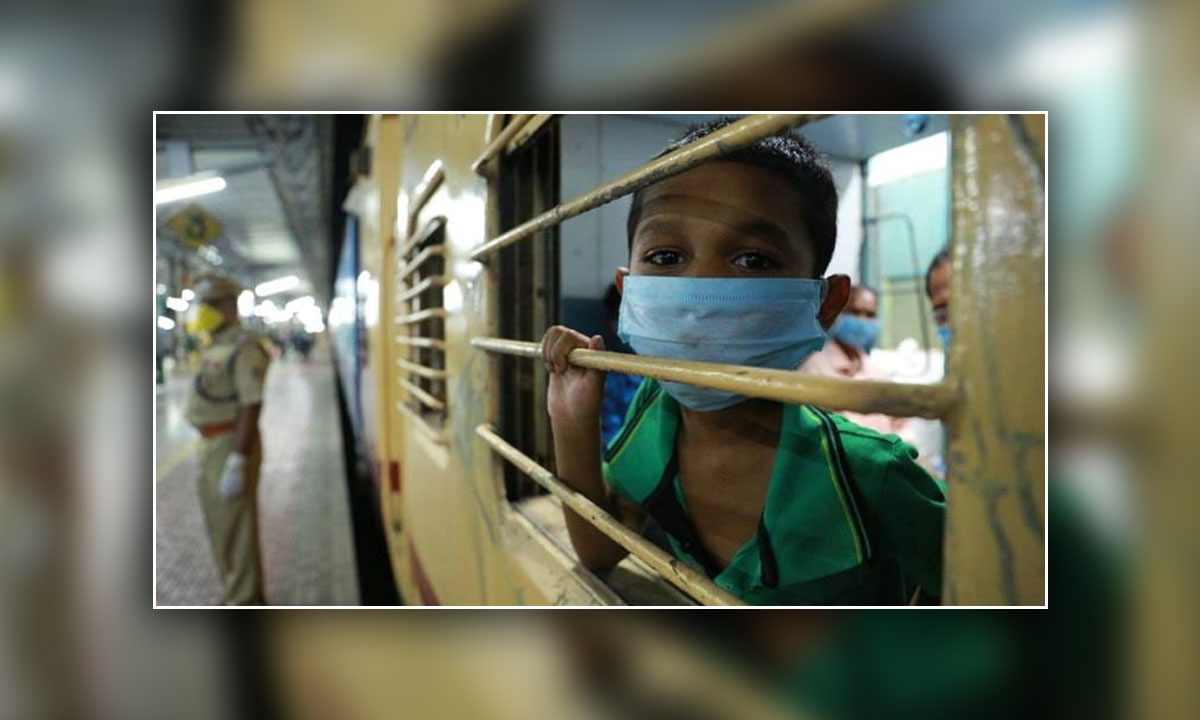We Will Never Know How Many People Died Of Starvation: State Government Will Not Admit To Starvation Deaths
New Delhi: The war against COVID-19 and its social and economic consequences is being led by the Central and state governments and we the people are mere followers. But as followers, we can imagine many things.
First, imagine that the virus can be defeated without a vaccine. That will lead us to imagine that a lockdown is a cure and, until the cure is complete, a lockdown will stop the spread of the virus. The reality is that a lockdown is not a cure, nor does it stop the spread of the virus. A lockdown is a pause, it may slow the spread of the virus, and it will buy us valuable time to build our medical and health infrastructure, spread awareness and be prepared to deal with the peak number of infected persons who will require hospitalisation. Those who had demanded a lockdown had understood the reality. On May 3, the governments would have got 40 days time to do those things; the question is, do governments need more time?
Second, imagine that the migrant workers who were prevented from going back to their homes are happy to be in their shelter homes, quarantines or camps, are content with the living conditions, and are satisfied with the food. The reality is what the Delhi Police found after inspecting the shelter homes as reported in The Indian Express (April 28).
“Fans not working, and no power back-up; sanitisation of toilets rarely done; most migrants want to leave as their families cannot survive; rude behaviour of civil defence staff; food quality not good; no hand wash and sanitizers; foul smell in toilets; water supply in the toilets only between 7 am and 11 am; one soap for bathing and no detergent for washing clothes; mosquito bites.” If those are the conditions of shelter homes (where the stay is voluntary), don’t imagine what they will be in quarantines and camps (where the stay is involuntary).
Third, imagine that the migrant worker (e.g. in Mumbai or Surat) is happy to remain in his one-room tenement with six-10 others, without a job or work, without money, and without making any remittance to support his family. The reality is that the vast majority of such workers got no assistance from the governments — no cash transfer, no rations. Their only desire is to go home. Uttar Pradesh and some other states took an enlightened approach and sent buses to ferry them to their home states, Bihar refused, and the Central government was non-committal until April 29. Now, Bihar has joined others to demand non-stop trains!
Fourth, imagine that there are no job losses, and that the jobs will continue to be there until the workers are able to return to their workplaces. The reality is what CMIE reported on April 27: that the unemployment rate stood at 21.1% even while labour force participation had fallen to 35.4%. The reality is that once an MSME is shut down, it is not easy to re-start it. The few workers — two to 10 — in the unit may have found other ways to earn a wage or migrated and, even if they are willing to come back, there will be arrears of wages. The unit would have bills to be collected and bills to be paid, and neither is easy after a prolonged shutdown. The unit would have run out of working capital and no bank or NBFC will lend without a credit guarantee. The supply chain would have been interrupted: what is the use of re-opening a dealership if the manufacturer has not resumed production? No one who has never invested his own money to start a business will understand the problems of running a business or the pain of closing it down.
Fifth, imagine that the Central government will keep its promise, made on March 25, that it will soon come out with Financial Action Plan II to help businesses, especially the MSMEs. The reality is that nothing has been done until the time of this writing. We don’t know if the Financial Task Force has made any recommendation. A new committee (if you believe the buzz) to think ‘Big and Bold’ is still thinking. The reality is that banks are flush with funds but they prefer to park them with the RBI than lend to NBFCs or SMEs. NBFCs are fast becoming illiquid and cannot on-lend.
Sixth, imagine that big industries will somehow survive and flourish as before. The reality is that big industries have realised that the old normal is out forever and are in search of a new normal. They are looking for conserving cash, curtailing capital expenditure, optimising capacity utilisation, downsizing their workforce, becoming debt-free, and expanding work-from-home. Big industries will also consolidate, which will result in less competition (e.g. telecom).
Seventh, imagine that the economy will bounce back smartly after the lockdown is lifted and we will see the V-curve. The reality is that the Indian economy did not recover after the demonetisation blunder, it did not recover after the botched-up GST, and will not recover easily after the lockdown is lifted. Even a tick-shaped (3 ) recovery will require hard work, plans, meticulous implementation, money, open markets, smart alliances and international co-operation.


